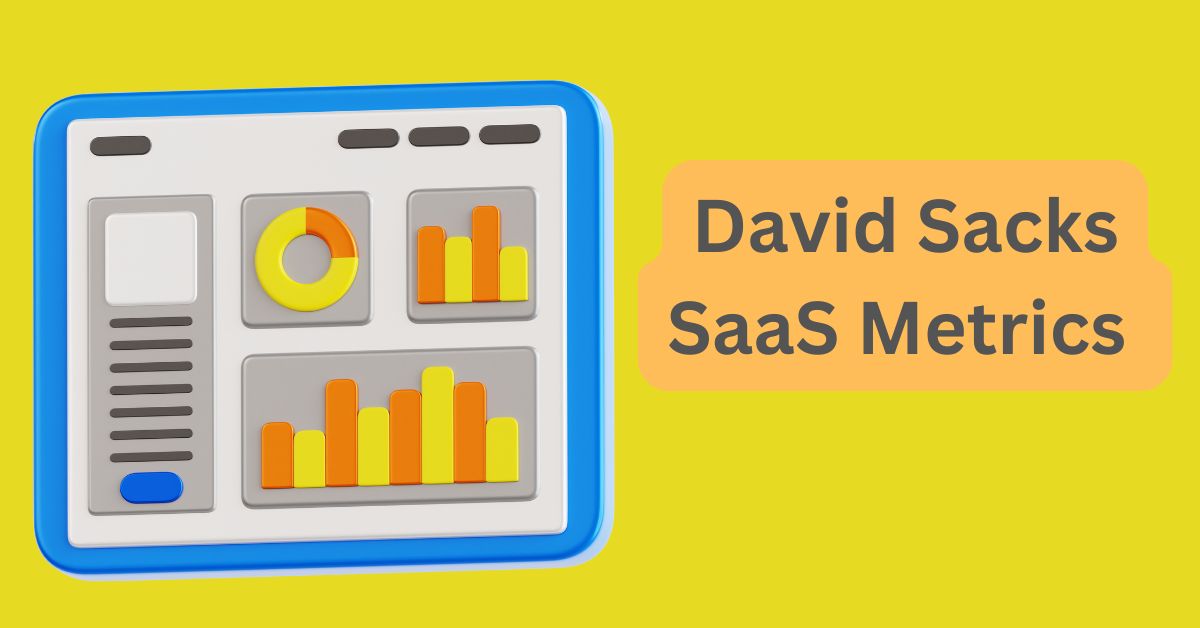David Sacks is a well-known name in the realm of software as a service. Having co-founded ****Craft Ventures, been COO of ****PayPal, and invested in big companies like Airbnb, Uber, and Slack, he has helped define how SaaS companies run. Founders and executives trying to effectively scale their companies especially benefit from his knowledge in SaaS analytics.
The main David Sacks SaaS metrics stresses will be broken down in this tutorial together with their importance and how to apply them to effectively expand your startup. We shall make things straightforward and practical so you may start using these realisations right away.
Why are SaaS metrics so important?
Driving blindly is what it is like scaling a SaaS company without knowing important benchmarks. Metrics track performance, enable entrepreneurs to make ****data-driven decisions, and allow them to prevent expensive errors. Sacks thinks that early on, an emphasis on the correct metrics will help one decide if a business succeeds or fails.
An anecdote: Consider two SaaS founders, Mike and Sarah. While Mike relies on his instincts, Sarah regularly monitors her metrics and adjusts her strategy accordingly. A year later, Mike is trying to figure out why clients are leaving while Sarah’s business is booming with consistent income. This is the potential of data-driven decision-making!
Important SaaS Metrics Presented by David Sacks
Let’s walk methodically over the most important SaaS KPIs and discuss how you might use them.
MRR, or monthly recurring income,
MRR is the monthly predictable income a SaaS company gets from subscribers.
Method:
MRR = Average revenue per user (ARPU) times Total active clients
The Why It Matters:
aids in revenue projection.
Decides financial situation and rate of growth.
Investors check company stability using it.
For early-stage SaaS companies, MRR development should be at least 10–20% month overrun.
2. ARR (Annual Recurring Income)
ARR is simply MRR times 12 to provide a yearly revenue picture.
The Importance of It
provides a long-term financial projection.
Extremely important for conversations about funding.
supports SaaS planning for businesses.
**3. *CAC (Consumer Acquisition Cost)*
Definition: CAC gauges the cost of acquiring a fresh customer.
Procedure:
CAC = Total sales and marketing costs / New client count obtained
Why It Matters
A high CAC indicates that you are overspending to draw business.
Effective marketing and sales follow from a low CAC.
Should be harmonised with LTV (lifetime value).
For a thriving SaaS company, the perfect CAC payback period should be less than twelve months.
**4. *LTV (Client Lifetime Value)*
LTV, or total income a customer is estimated to bring over their lifetime with your business,
Form:
LTV = ARPU times customer lifetime—in months or years.
The Reasons It Matters
aids in consumer profitability determination.
One considers desirable an LTV to CAC ratio of 3:1 or above.
**5. *Churn Rate*—customer and revenue churn
Churn rate, then, is the percentage of lost income or customers over a certain period.
Form:
Customer Churn Rate = (start’s total customers / lost customers throughout term) × 100
Revenue Churn Rate = (MRR lost during time / Total MRR at start) × 100
The Importance of It
High turnover indicates insufficient value from your product.
Yearly healthy SaaS turnover should be less than 5%.
Retaining current consumers is less expensive and simpler than attracting new ones.
6. Runway and Burn Rate
The burn rate, then, is the monthly loss of money your company is suffering. Your company’s survival length at the current burn rate is runway.
Formula:
Burn Rate = Total Revenue Less Total Monthly Expenses
Runway: Cash balance / Monthly burn rate
The Importance of It
Finds your maximum operating duration without fresh money.
facilitates fundraising strategy and budgeting.
Startups having at least eighteen months of runway appeal to investors.

**7. *magic number*
The Magic Number compares new income to sales and marketing expenditure to help gauge SaaS sales efficiency.
Method:
New ARR in quarter times four divided by sales and marketing expenses is the magic number.
The Why It Matters:
An effective sales magic number is one above 0.75.
Should your sales plan prove to be below 0.5, you may have to change it.
8. Net Dollar Retention (NDR)
Definition: NDR demonstrates, including upsells and turnover, how much income development you generate from current clients.
Equation:
Starting MRR + Expansion – Churn divided by Starting MRR times 100 yields NDR.
Why It Matters?
An NDR more than 100% indicates that your company is expanding even without fresh business!
It speaks to great product value and consumer loyalty.

In essence, learning SaaS metrics for success
David Sacks has shown that scaling well, raising money, and creating a profitable company all depend on knowing SaaS metrics. Tracking MRR, CAC, LTV, churn, and NDR helps you guide your business towards the correct path and make wise decisions.
The next action? Start monitoring your own SaaS data right now and apply it to best shape your expansion plan. That determines your future unicorn classification!
When you understand David Sacks’ SaaS metrics, you can use the SaaS Valuation Calculator to see how these numbers affect your company’s worth in real time.

